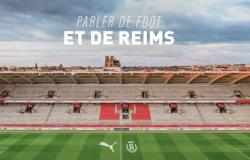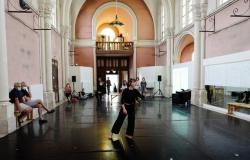Diane von Furstenberg walks lightly on the carpets of the main floor of the building on the Grand Canal, fresh from her morning walk through the streets. «Why did he put on his jacket? If you take it off, it’s hot», she says in perfect Italian. The sharp gaze of a prehensile mind, she looks out onto the balcony in the sultry hours of June: «This city always leaves me speechless». It is difficult to convey a complex and rich personality like that of «Dvf». Stylist, invented the revolutionary «wrap dress», a success that led her to the cover of Newsweek in 1976 with the title of the most important woman in the world in fashion. She is the wife of Egon von Fürstenberg – son of Tassilo zu Fürstenberg and Clara Agnelli, sister of Gianni – from whom she separated in ’72. Since 2001 she has been married to Barry Diller, a producer who was formerly head of Paramount and Fox. Ambassador of Venetian Heritage in the worldthe non-profit organization directed by the indefatigable Toto Bergamo Rossi. Feminist without victimism, a “gladiator”, as a friend defined her, but with the sword of femininity, in 2010 she created the DvF Award which rewards “extraordinary” women who dedicate themselves to improving the lives of other women, in recent two years celebrated in Venice. A cosmopolitan lifewith important friendships, from Mick Jagger to Hillary Clinton and Sam Altman (Time put her in the list of the 100 most influential people in the world) which will be covered by the film Diane von Furstenberg: Woman in Charge (in Italian approximately « Woman in command”, but charge is also “charge, “role”, “power”), directed by Trish Dalton and Sharmeen Obaid-Chinoy, premiered at the Tribeca Film Festival and streaming on Disney+ from June 25th.
Diane von Furstenberg, her life contains many lives. But what was the most important moment?
«The most incredible event was my birth itself. My mother, 18 months before I was born, she had just come out of Auschwitz, she had spent 14 months in concentration camps. Miraculously she didn’t die. Back home in Belgium, her mother fed her every 10 minutes, very little, like a little bird. She weighed 28 kilos. After six months she was almost recovered. After a while she gets married and the doctor tells her: you absolutely cannot have children for at least three years, the mother would die and the child would not be normal. After nine months, I was born and in a way I’m not normal… My mother always told me that God saved her so that she would give me her life. By giving me life I gave her back to her. I was her torch of freedom.”
Why a movie?
«It was born from the meeting with director Sharmeen Obaid-Chinoy, two-time Oscar winner. You have made fantastic films, at 28 you made a film about Taliban schools. I started with the idea of making small documentaries about the fabulous women that I try to help in the world, with my prizes and my initiatives. But the networks we approached asked for a documentary about me instead. I wasn’t convinced but the director insisted: through you we can talk about your commitment to women. That’s how she convinced me.”
A sort of self-documentary?
“No. I withdrew from production because I didn’t want to create a self-congratulatory work. I gave access to my archives, diaries and photographs, I put the author in contact with my family. It all started three years ago, then it was bought by Disney.”
What effect does it have to see yourself as a spectator?
«I didn’t even want to see the film before it came out. But in March the director forced me. I felt like a visit to the gynecologist, but two hours long. The following weeks I was a little paranoid, I regretted having exposed my family, but always hoping that my story, told honestly, could be an inspiration to other women.”
As?
«I don’t deny that I have had an exceptional life. At 26 I was already an established, successful woman. When I saw the film again in Tribeca I realized that sincerity is the most important thing, being who you are is the flag of freedom. If you are not true to yourself you will never be free.”
How did you become a Woman in Charge?
«When I was young I didn’t really know what I wanted to do but I knew the type of woman I wanted to be, a Woman in Charge. I became one thanks to a small dress that I produced in Italy, in Como, the wrap dress, the crossover dress, also thanks to Angelo Ferretti. It didn’t look like anything special, a simple Jersey dress, with prints, in my animalier style or in any case inspired by nature. With this dress, so tight, the woman feels protected but at the same time sexy because she shapes her body. I went around to the shops to offer it. I felt confident and conveyed confidence to women even with this dress. In a certain sense, I was already doing social media 50 years ago, because I was establishing a direct relationship.”
Being «in charge»: isn’t that a somewhat demanding ambition?
«It’s not an aggressive attitude. It’s a commitment to yourself, you accept your imperfections which become your assets, you accept your vulnerability and transform it into strength. When you feel in charge you can look to others and help them.”
The film ends with Venice. What was your first encounter with the city?
«I came as a child with my father and my brother for the day, we were at the seaside on the Ligurian coast. At the University of Geneva I then met Egon von Fürstenberg, son of Clara Agnelli Nuvoletti who lived in Mestre. Her sister, Countess Cristiana Brandolini d’Adda, the youngest, lived in this very palace, the first Venetian palace I entered. I remember those September days at the end of the Sixties: Venice was so glamorous, there was the Film Festival. Parties, hotels, a whirlwind of gondolas and motorboats. During the day at the Lido, among the huts, you found Marina Cicogna with Florinda Bolkan, Maria Callas with Onassis, Jane Fonda. And I was in my early 20s. Even after Egon I came to Venice every year, for one reason or another, with friends.”
Then he decided to put down roots.
«Three years ago I read Thomas Madden’s History of Venice. I was on a boat with my husband: in August we sail along the Adriatic and stop in Venice at the Zattere. As I read the book I started to think that Venice was a woman, a refugee who escaped from the mainland and built this city. An extraordinary woman, adventurer and warrior, a political woman, a business woman, passionate and seductress, painted by everyone, described by everyone. Republic for 1400 years, longer than any European republic, invented modernity: the banking system, passports, embassies and customs, diplomacy, it was the mother of logistics for the last 1500 years and I think it can be the place of debate for the logistics of the future. So I thought about moving here and Countess Cristiana Brandolini d’Adda proposed to me: why don’t you come and live in this palace?”
Venice as a laboratory for the ideas of the future?
«Venice will be the stage of the winter of my life. This winter I would like to use everything I have learned, my experience, first and foremost to help other women become the women they want to be. But I would also like to contribute to using Venice as a place for the debate on the changes that await us, in this moment of great revolutions. I am referring to artificial intelligence, information distribution, logistics. I recently brought Sam Altman here and I plan to continue.”





